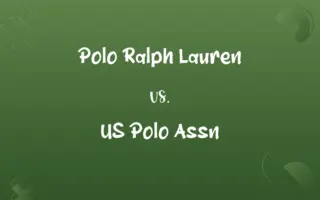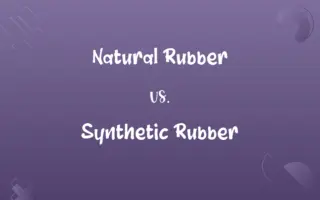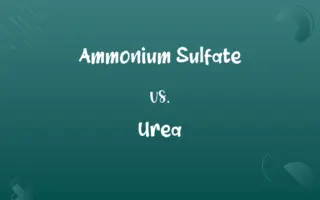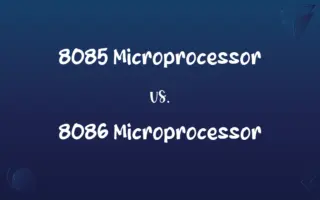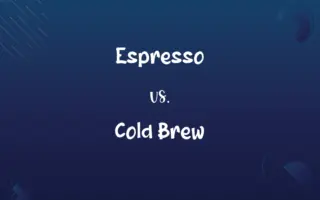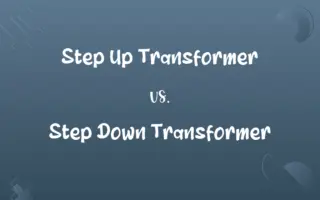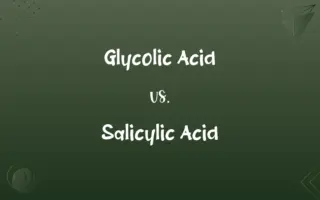Misting vs. Fogging: Know the Difference

By Hifza Nasir & Dua Fatima || Published on July 17, 2024
Misting involves spraying fine water droplets to cool or humidify, while fogging creates a denser cloud of micro-droplets for disinfection or pest control.

Key Differences
Misting and fogging are both techniques used to disperse liquid into the air, but they serve different purposes and operate through distinct mechanisms. Misting systems spray fine droplets of water to cool environments, increase humidity, or water plants. Fogging, on the other hand, generates a cloud of much finer droplets, creating a fog-like effect that can penetrate deeper into surfaces and hard-to-reach areas.
Dua Fatima
Jul 17, 2024
Misting are often used in agriculture, horticulture, and for outdoor cooling in hot climates. The droplets produced by misting are larger than those in fogging, making them ideal for direct cooling and humidification without saturating surfaces. Fogging, method is primarily used for disinfection, pest control, and distributing nutrients in greenhouses. The fine droplets ensure a more uniform and extensive coverage, making it effective for eliminating pathogens and pests over large areas without leaving residues.
Hifza Nasir
Jul 17, 2024
Misting systems typically consist of a series of nozzles connected to a water source, which can be adjusted to control the droplet size and spraying pressure. Fogging devices, including thermal and cold foggers, use either heat or high pressure to create ultra-fine droplets. Thermal foggers heat the liquid to produce fog, which is suitable for outdoor and large space applications. Cold foggers, using high pressure and sometimes ultrasonic technology, are better suited for indoor environments where the use of heat is not advisable.
Dua Fatima
Jul 17, 2024
The choice between misting and fogging depends on the specific needs of the application. Misting is preferred for cooling and humidification purposes where water contact is not an issue, and direct moisture can be beneficial. Fogging is chosen for applications requiring extensive coverage and deep penetration of the liquid, such as disinfection and pest control, where minimal residue and maximum dispersion are desired.
Shumaila Saeed
Jul 17, 2024
Comparison Chart
ADVERTISEMENT
Primary Use
Cooling, humidification, plant watering
Disinfection, pest control, nutrient distribution
Hifza Nasir
Jul 17, 2024
Application Area
Outdoor areas, greenhouses, agriculture
Indoor spaces, hard-to-reach areas, large outdoor spaces
Hifza Nasir
Jul 17, 2024
Effect on Surfaces
Can moisten surfaces
Minimal residue, penetrates deep into surfaces
Dua Fatima
Jul 17, 2024
Suitability
Direct cooling and humidification
Extensive coverage, deep penetration
Hifza Nasir
Jul 17, 2024
ADVERTISEMENT
Misting and Fogging Definitions
Misting
A cooling process using fine water spray.
Outdoor patios use misting systems to cool guests during summer.
Hifza Nasir
Feb 28, 2024
Fogging
Penetrates hard-to-reach areas.
Fogging is effective in treating spaces within air ducts and behind fixtures.
Hifza Nasir
Feb 28, 2024
Misting
Directly waters plants.
Misting systems provide gentle watering suitable for delicate seedlings.
Dua Fatima
Feb 28, 2024
Fogging
Used for indoor disinfection.
Hospitals use fogging to evenly distribute disinfectants in patient rooms.
Dua Fatima
Feb 28, 2024
Misting
Used for outdoor comfort.
Zoos install misting stations to keep animals and visitors comfortable in heat.
Hifza Nasir
Feb 28, 2024
ADVERTISEMENT
Fogging
Disperses chemicals in a fine fog.
Fogging machines are used in warehouses to control pest infestations.
Hifza Nasir
Feb 28, 2024
Misting
Can be adjusted for droplet size.
The misting system's nozzles were adjusted to optimize plant hydration.
Dua Fatima
Feb 28, 2024
Fogging
Delivers nutrients in greenhouses.
Fogging systems distribute nutrients evenly across extensive greenhouse areas.
Hifza Nasir
Feb 28, 2024
Misting
Increases humidity for plants.
Greenhouses employ misting to maintain optimal humidity for tropical plants.
Dua Fatima
Feb 28, 2024
Fogging
Leaves minimal residue.
After fogging for mold, the room was left with minimal residue and no damage.
Shumaila Saeed
Feb 28, 2024
Misting
A mass of fine droplets of water in the atmosphere near or in contact with the earth.
Hifza Nasir
Feb 27, 2024
Fogging
Condensed water vapor in cloudlike masses lying close to the ground and limiting visibility.
Hifza Nasir
Feb 27, 2024
Misting
Fine drops of a liquid, such as water, perfume, or medication, sprayed into the air.
Hifza Nasir
Feb 27, 2024
Repeatedly Asked Queries
Can misting be used for pest control?
While misting can deliver water-soluble pesticides, fogging is generally more effective for pest control due to its finer droplet size and deeper penetration.
Hifza Nasir
Jul 17, 2024
Can fogging be used for humidification?
While fogging can increase humidity due to the water content in the fog, it is primarily designed for distributing chemicals, and misting is more efficient for humidification purposes.
Dua Fatima
Jul 17, 2024
Can misting and fogging be used together?
Yes, in some applications such as agriculture or greenhouse management, using both methods can optimize plant care by providing both direct hydration and distributing nutrients or pest control solutions effectively.
Shumaila Saeed
Jul 17, 2024
How does weather affect misting and fogging?
Misting effectiveness can be reduced in windy conditions as droplets may evaporate or drift away. Fogging, especially thermal fogging, is less affected by wind but should be used with caution in varying temperatures to ensure safety and effectiveness.
Hifza Nasir
Jul 17, 2024
Do misting and fogging systems require professional installation?
Misting systems can often be installed by individuals following manufacturer instructions, while fogging equipment, particularly for large or commercial applications, may benefit from professional setup to ensure optimal coverage and safety.
Dua Fatima
Jul 17, 2024
How often should misting and fogging systems be maintained?
Regular maintenance, including cleaning nozzles and checking for leaks in misting systems and servicing foggers according to manufacturer guidelines, ensures longevity and effectiveness.
Hifza Nasir
Jul 17, 2024
What type of water should be used in misting and fogging systems?
It's recommended to use clean, filtered water in misting systems to prevent nozzle clogging and ensure optimal performance. For fogging, particularly when dispersing chemicals, distilled or deionized water is often preferred to prevent equipment corrosion and maximize effectiveness.
Dua Fatima
Jul 17, 2024
Is fogging safe for indoor use?
Yes, when using a cold fogger designed for indoor use and following safety guidelines, fogging can be safe and effective for indoor disinfection and pest control.
Hifza Nasir
Jul 17, 2024
Can misting systems cause mold growth in outdoor areas?
Excessive use of misting systems in areas with poor ventilation can contribute to increased humidity levels, potentially fostering mold growth. Properly managing misting duration and ensuring adequate air flow can mitigate this risk.
Hifza Nasir
Jul 17, 2024
Are there environmentally friendly chemicals that can be used in fogging machines?
Yes, there are eco-friendly options available for use in fogging machines, including organic pesticides and natural disinfectants. Always check the compatibility of these solutions with your specific fogging equipment.
Dua Fatima
Jul 17, 2024
Share this page
Link for your blog / website
HTML
Link to share via messenger
About Author
Written by
Hifza NasirCo-written by
Dua Fatima


